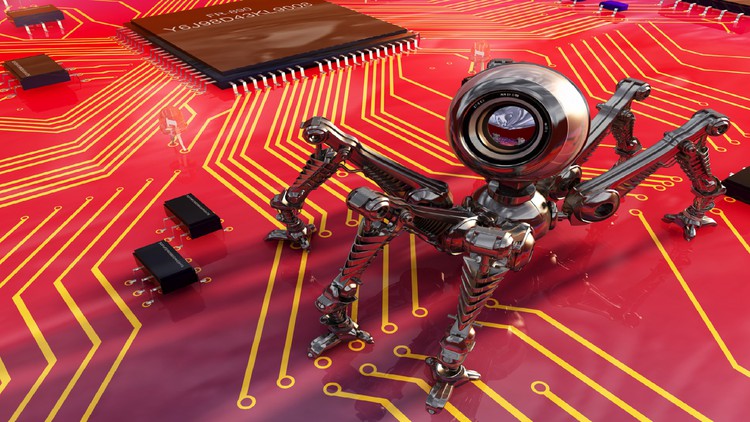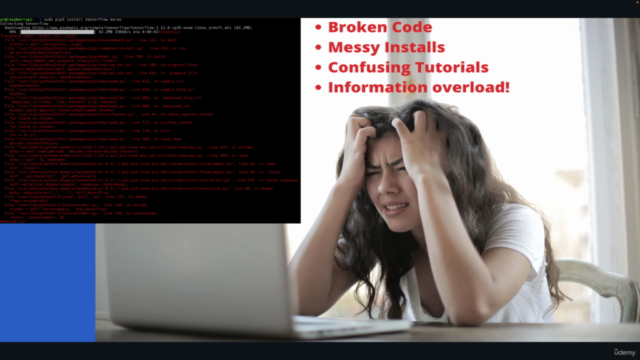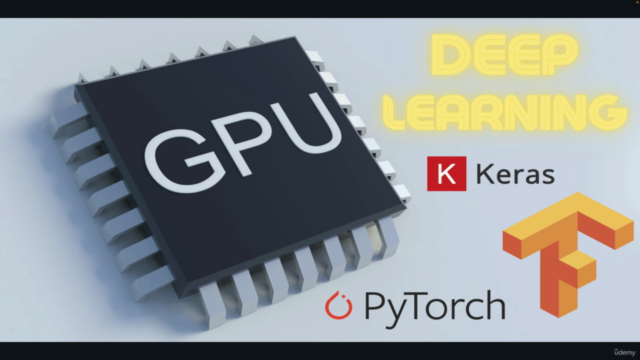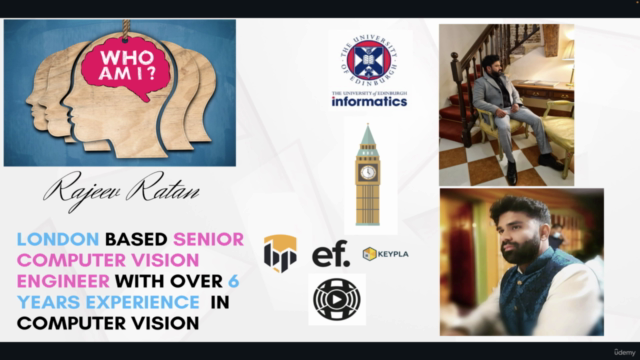Modern Computer Vision GPT, PyTorch, Keras, OpenCV4 in 2024!

Why take this course?
It seems you've provided a comprehensive list of computer vision and deep learning projects that can be implemented using various tools and frameworks like OpenCV, PyTorch, Keras, TensorFlow, and others. These projects cover a wide range of topics from basic image processing to advanced deep learning applications such as facial recognition, object detection, and even medical image analysis.
Here's a brief overview of the types of projects you've listed:
-
Image Processing: Includes tasks like edge detection, color quantization, optical flow, etc., which are fundamental for understanding computer vision concepts.
-
Deep Learning Models: Covers various convolutional neural networks (CNNs) architectures, generative models like GANs, and vision transformers.
-
Object Detection: Various datasets and models are used to detect different objects such as guns, zebras, mushrooms, construction hardhats, and more.
-
Image Segmentation: Techniques like U-Net, SegNet, and Mask R-CNN for segmenting images into meaningful parts.
-
Medical Image Analysis: Includes tasks like depth estimation from images and pneumonia detection in X-rays, which can have significant real-world applications.
-
Computer Vision for Video: Projects that involve video classification, including both CNN-RNN architectures and transformers.
-
Point Cloud Processing: For handling 3D data like PointNet for classification and segmentation tasks.
-
Optical Character Recognition (OCR): Including captcha cracking, which is a more complex form of OCR.
-
Web Development: Projects that involve setting up a Flask REST API and web application to serve models or data.
-
Vision Transformers: A newer approach to image classification tasks.
-
Metric Learning for Image Similarity: Techniques for finding similar images based on learned distance metrics.
-
Image Captioning: Combining visual understanding with natural language processing to generate descriptive captions for images.
These projects are a mix of both academic and real-world applications, and they can be adapted to various domains depending on the dataset and problem you're trying to solve. The list demonstrates the breadth and depth of computer vision and deep learning topics that one can explore today. Whether you're interested in machine learning research, applying AI to solve practical problems, or building a career in this field, these projects provide a solid foundation to build upon.
Course Gallery




Loading charts...
Comidoc Review
Our Verdict
The Modern Computer Vision GPT, PyTorch, Keras, OpenCV4 in 2024 course offers extensive coverage of classical and contemporary computer vision techniques. While the instructor effectively communicates complex topics, hands-on examples sometimes lack detailed explanations or have outdated code snippets. The course is still a valuable resource for learners with solid Python skills looking to study cutting-edge computer vision methods.
What We Liked
- Instructor has deep knowledge of Computer Vision, providing comprehensive coverage from fundamental to advanced topics.
- Hands-on approach with Python code examples on Google Colab ensures practical experience.
- Well-explained classical and modern concepts; includes YOLOv8, DINO-GPT4V, OpenCV4, Face Recognition, GenerativeAI, Diffusion Models, Transformers, and more.
Potential Drawbacks
- Lacks in-depth explanations of certain parameters, principles, and algorithms.
- Some code examples are outdated or contain errors; instructor may not promptly answer questions.
- Occasionally rushes through code implementation without thorough explanation; assumes foundational Python knowledge